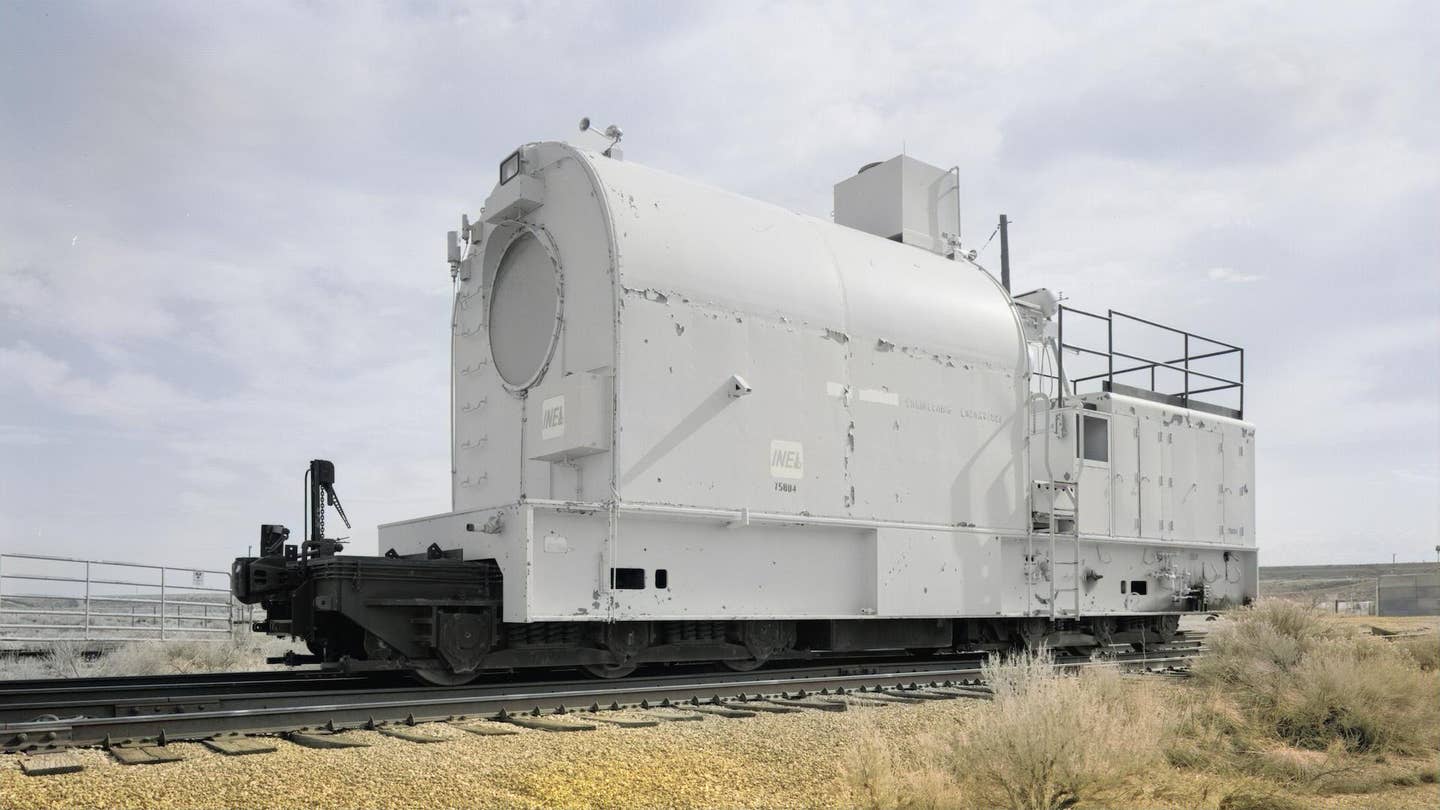This Lead-Lined Locomotive Hauled Experimental Nuclear Reactors
This creepy-looking locomotive played a role in the Air Force’s experiments with nuclear-powered planes.

Back before we figured out that nuclear power isn't the end-all-be-all, the United States government considered all manner of loony applications for nuclear fission. It figured we could blow up entire mountains to build highway bypasses or keep our Air Force bombers in the air for extended periods by powering them with reactors. Some experimentation with the latter was performed at the Idaho National Laboratory (INL), which relied on a little-known shortline railroad to build and transport experimental nuclear reactors, some of them meant to power planes. It had only one locomotive, clad in heavy radiation shielding, which make it look like a Thomas & Friends character in an old-school diving helmet. No, I'm not writing that fanfic, you can do it yourself.
The locomotive's engine, which doesn't appear to have had an official name, was constructed in June of 1954, according to an Idaho Magazine story written by Thornton Waite, a railroad historian and former employee of the INL. It reportedly measured in at only 45 feet long, but weighed the better part of 215 tons; that's about the weight of an EMD SD70 freight locomotive but at less than two-thirds the length. According to Waite, much of the added mass came from the thick radiation shielding surrounding its cab, taking the form of an elongated, semicircular enclosure made largely of lead and partially filled with water. Leaded glass viewports on either end—four feet thick and filled with oil per a Reddit post—gave a modicum of visibility to its operators, who entered and exited via a hatch in the floor, allowing them to climb down into tunnels to avoid radiation emitted by tests conducted above.
Sources contradict one another on the unit's power output, with the Idaho Magazine story claiming 400 horsepower from its diesel-electric prime mover, while a historical document from the INL itself specifies twin 350-hp units. Arguing for one over the other is to split hairs over the difference between about two and three hp per ton, which GE estimated gave the engine a top speed of 15 mph. That was apparently an overestimate, as the INL document records an actual top speed of 4.5 mph, the pace of a brisk walk, and it slowed to 2.5 mph while in service to minimize the chances of derailment.
Such would've been especially hazardous given the loads the engine pushed around the facility—which in its early days, reportedly consisted of various nuclear test rigs, some of them intended for use in aerospace and sometimes reportedly weighing several hundred tons. These it ferried around the INL's Test Area North (or TAN) site on double-wide flatcars that straddled parallel sets of standard-gauge tracks, spaced so the locomotive could ride on the two center rails.
Various buildings from the maintenance facility to the site's hangar and test locations were reportedly connected by six rail spurs, the longest of them 1.5 miles in length. All linked back to a specially built turntable, measuring 84 feet across, with short rail extensions jutting off in three directions that Waite said allowed the locomotive to switch between pushing and pulling positions. For reasons seemingly lost to time, pushing seems to have been the modus operandi, presumably so operators could back away in the event of an accident with the payload. Radio contact with and video surveillance on the train were maintained at all times, and the engine even had a redundant set of controls should the main set malfunction.
While the Aircraft Nuclear Propulsion program this engine was built to support was scuttled in 1961, the TAN shortline and its strange locomotive reportedly continued to be used into the 1980s to test reactors intended for use in space. The site's rail infrastructure was largely disassembled that decade, but the locomotive survived. In 2006, it was trucked off to Arco, Idaho, for display at the EBR-I Museum, where one of the world's first electricity-producing reactors is kept. There it stands to this day, an oft-overlooked exhibit at an offbeat museum in the middle of nowhere, but a mercifully preserved artifact of both nuclear and railroading history.
Got a tip or question for the author? You can reach them here: james@thedrive.com
